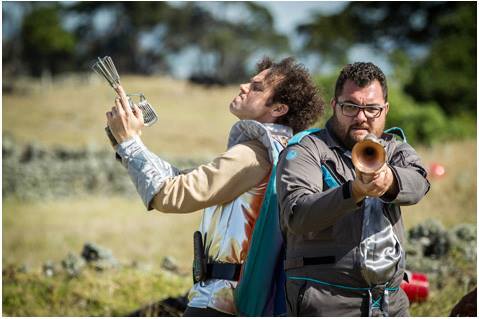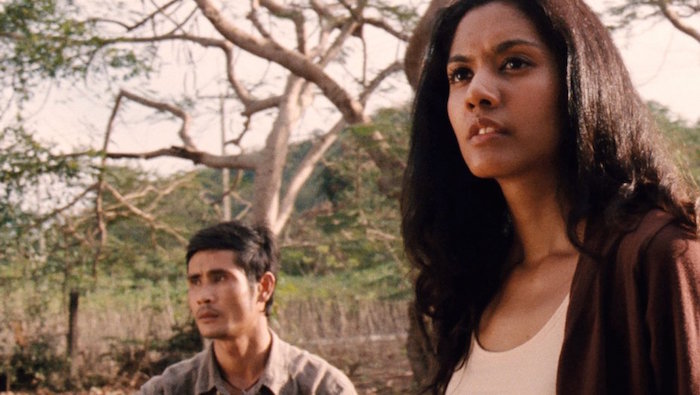OCCUPANTS
 Tuesday, November 8, 2016 at 10:03AM
Tuesday, November 8, 2016 at 10:03AM Stars: Briana White, Michael Pugliese and Robert Picardo.
Writer: Julia Camara
Director: Russell Emanuel
Rating: 4/5

Two engaging central performances and a director determined to maximise the potential of his premise ensures Occupants emerges as one of the most effective and satisfying low-budget genre works of 2016.
A low-key alt-universe/time-portal two-hander, director Russell Emmanuel’s crowd-pleaser exhibits all the character-driven drama and high-concept smarts of the best Twilight Zone episodes. He’s probably scratching his head at the protagonist’s home-tech set-up, but somewhere Rod Serling is also smiling warmly that his legacy is embraced with such skill and affection.
Annie Curtis (Briana White) is a LA-based documentary maker who makes herself and good-guy husband Neil (Michael Pugliese) the focus of her latest project, in which she subjects the household to a diet cleansing regime and captures its impact upon their dynamic. Scripter Julia Camara’s narrative kicker is not especially sturdy (what exactly does Annie expect to capture via her multi-camera set-up apart from inevitable mood swings and weight loss?), but there is some sly social satire in the notion that only Californian millennials would assume there is an audience interested in watching them turn vegan.
Showing a sure touch with a series of slow-burn reveals, Emmanuel (a journeyman talent credited with solid home-vid titles like P.J., with John Heard, and Chasing the Green, with William Devane) amps up the tension when Annie’s footage reveals a window into a parallel plane of existence in which two far less happy versions of her and Neil struggle with a miserable life. Presented with undeniable evidence this extraordinary event is in fact real, Annie and Neil take on the roles of voyeurs, peering intently at and slowly identifying with their darker selves living another life.
Annie can’t help but get involved with the ethereal doppelgangers when her cameras reveal hot-button topics like pregnancy and potential homicide; what neither Annie or Neil count on are the consequences when their other selves take a vengeful ‘Mind your own business!’ stance. Events become worrisome, then menacing, the stresses of a life without beer and pizza amplified by nocturnal visitations from beyond this world.
Kudos to Emmanuel and his casting team for pairing White and Pugliese, who have a endearing, convincing chemistry, whether as the buoyant, sweet-natured ‘Annie and Neil’ or as the sad, increasingly tormented ‘Others’. In a bit part played directly to camera, veteran character actor Robert Picardo (The Howling; Star Trek Voyager; Inner Space) plays Annie’s mentor Dr Alan Peterson, a role that adds much-needed weight to some of the plot’s loopier developments.
A ‘found footage’ film by defintion, DOP/editor Emile Harris eschews the familiar shaky-cam, instead applying split-screen technique and believable graphics to convincing affect. The usual illogical elements continue to undermine the genre; why would Annie’s hours of footage be edited into this thriller-like construct? why not go public with such sensational evidence of supernatural phenomenon? But Occupants so convincingly plays to its strengths, such griping seems petty; Emmanuel and his leads provide a giddy sense of thrilling discovery and palpable tension that proves entirely winning.
 Independent,
Independent,  Science Fiction,
Science Fiction,  found footage
found footage 







